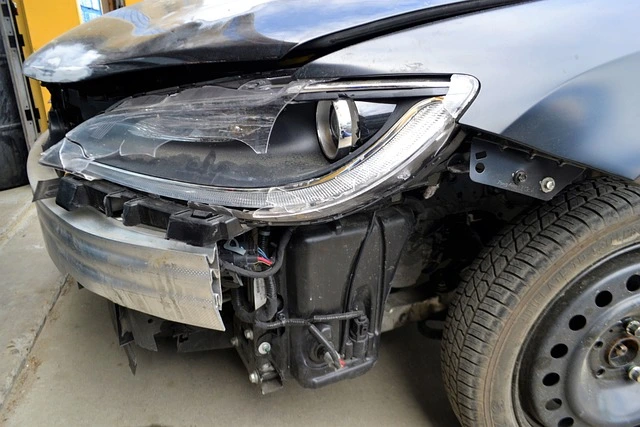Insurance isn’t the most exciting aspect of owning a car, but it is one of the most important. Not only is your insurance intended to protect you financially if you are involved in an accident or are injured as a result of one, but most states require you to have it if you own a car. According to Consumer Reports, you should look for the finest auto insurance coverage not just when you buy a car, but also on a regular basis to guarantee you always receive the best rate.
CR discovered the insurance firms with the greatest service and the lowest monthly prices through a poll of its members. However, there are several factors to consider while shopping for vehicle insurance. To begin, it is useful to understand the elements that insurers examine when determining your monthly costs.
These are some examples:
Driver profile: The cost of your premium is determined by your age, length of driving experience, and driving history. If you have an accident, incur a traffic citation, or add a teen driver to your insurance, the cost of your coverage may rise. The insurance company will classify you as high-risk.
automobile type: In general, the greater the insurance premium, the higher the cost of the automobile. This is due to the fact that costly automobiles are more expensive to repair and replace. High-performance automobiles are more expensive to insure due to the increased risk of owning a quicker car.
Credit history: According to Experian, a business that tracks people’s credit scores, most states allow vehicle insurance prices to be based on a person’s credit score. Insurance firms believe that a person’s credit history is a good predictor of how likely they will have to pay claims, therefore they price their insurance accordingly.
Credit-based insurance scores are restricted or prohibited in California, Hawaii, Maryland, Massachusetts, Michigan, Oregon, and Utah. In some areas, however, a lower credit score may result in a reduced rate.
External conditions: Rates rise when local weather trends, transportation patterns, and other factors make it more probable that someone may submit a claim. Assume that storms that caused damage in your region resulted in a high number of auto insurance claims.
In that instance, your firm might request a rate rise for everyone from your state’s insurance regulator since it is now more exposed to that risk. Customers in areas where there are more accidents are more likely to spend more.
Loyalty is not rewarded.
People frequently believe that insurers reward clients for sticking with them. According to a recent survey of Consumer Reports members, you may save money by searching for a lower rate on a regular basis. In the previous five years, 23% of our reps have switched insurance carriers.
63% claimed they obtained a better deal, and 78% said they were extremely satisfied with their new carrier. Another reason you might want to switch insurance carriers every few years is to save money.
Except for California, Florida, Ohio, and Maryland, most states allow insurance firms to do this controversial act, which allows them to boost premiums for reasons unrelated to liability risk. Finally, if an insurance provider believes you will not move to a different carrier, they may hike your premiums just because they can. This will increase your expenses.
Consider how your life evolves.
If you get married, add a teenage driver to your policy, add or remove a car, or if the distance you commute to work increases, as it did for many people during the epidemic, you may need to update your insurance. Inquire with your insurance provider about how much the modifications would cost or save you, and compare different insurance policies to see which company can offer you the best rate.
Also, don’t forget to ask your insurance carrier to adjust your coverage to reflect the fact that your automobile has depreciated in value. They might not be able to accomplish it on their own. Check out CR’s auto insurance ratings for a comprehensive list of insurers that you might not find with a quick Google search.
Select a reputable insurance.
Getting a reduced premium is crucial, but it is not the only consideration. Find an insurance provider that, in addition to offering competitively cheap rates, pays out claims swiftly and fairly, provides excellent customer service when you aren’t filing a claim, helps you properly analyze your policy, and provides immediate assistance and guidance.
CR ranks insurers based on what members say about the cost of their premiums, the ease with which claims may be filed, the quality of non-claims customer care, how thoroughly policies are examined, how clear the coverage is, and how much support and guidance they provide.
We polled 56,396 CR members about their auto insurance in the fall of 2020 to create our ratings. Between 2016 and 2020, they provided us with 67,185 reports on the motor insurance firms with whom they did business.
Don’t skimp on liability insurance.
Most nations need motorists to have at least the bare minimum of coverage, but it’s a good idea to go above and above the bare minimum if you can afford it.
Liability insurance compensates you for injuries and property damage caused by an accident. Even if you don’t have much to protect, experts recommend purchasing more than the bare minimum. Depending on your state, a ruling against you might result in you losing some of your salary.
A higher level of insurance would include $100,000 per participant, $300,000 per event, and $100,000 for property damage. According to Robert Hunter, director of insurance at the Customer Federation of America (CFA), an awning liability coverage provides extra security for your car and house. Most of the time, these insurance increase per-person coverage to $300,000.
Low coverage limits: According to Douglas Heller, an insurance consultant with CFA, umbrella policies and rules with larger liability limits might be difficult for drivers with lesser incomes to afford, despite the fact that they provide superior protection.
Only California, Hawaii, and New Jersey have government-subsidized low-income driver insurance. According to Heller, having low-limit liability insurance is preferable to not having insurance or not driving, which can prevent individuals from acquiring employment or other means to earn money.
Uninsured motorist insurance: While this coverage is not required in many areas, the Insurance Information Institute reports that one out of every eight drivers does not carry auto insurance. This figure has been consistent for more than 20 years, indicating that uninsured motorist coverage is a good idea even if it is not mandated. This coverage compensates for your and your passengers’ medical expenditures in the event of an accident caused by an uninsured motorist.
Why get it if you reside in a no-fault state where your firm pays regardless of who was at fault? Because it compensates for lost earnings following an accident. If you are hit by a car and the driver does not stop, uninsured motorist insurance protects you and your family. According to Heller, you should acquire at least as much protection for yourself as you do for others in an accident.
Underinsurance coverage: To save money, many drivers prefer to carry only the bare minimum of liability insurance. If you are involved in a tragedy with someone who does not have enough insurance to cover your injuries and property damage, an underinsured policy will protect you.
Attempt to Save Money on Additional Coverages
Collision insurance, which compensates for damage caused by a collision, and comprehensive insurance, which helps protect against car theft and storm damage, are two coverages you may be able to reduce to decrease your price. You may also be able to save money by not purchasing additional forms of coverage.
Adjust your deductible: According to Hunter of CFA, increasing your comprehensive and collision deductibles from $500 to $1,000 may split your premium by an average of 11%.
Older vehicles do not require additional coverage:
You may choose to forego collision and comprehensive coverage if your annual rates equal or exceed 10% of the book value of your vehicle. If you do not have insurance, you may end up paying more in the long run than the cost of repairing or replacing a damaged, stolen, or totaled vehicle.
Drop rental reimbursement coverage: You don’t need this coverage if you have another automobile to use while yours is being repaired. If you find a better rate through an auto club or if your car’s warranty includes roadside help, you can forego roadside assistance coverage.
Examine your personal injury and medical expenses coverage:
You don’t need to add health insurance to your auto insurance if you already have decent health insurance. Keep the coverage if you don’t have health insurance or if your regular passengers don’t have enough coverage.
Actively seek discounts: These can include discounts for bundling home, auto, and umbrella policies with the same company, completing a safe-driving course, informing your company of your lower annual mileage, and informing your company that your teen driver has a good grade point average, usually a B or higher.

